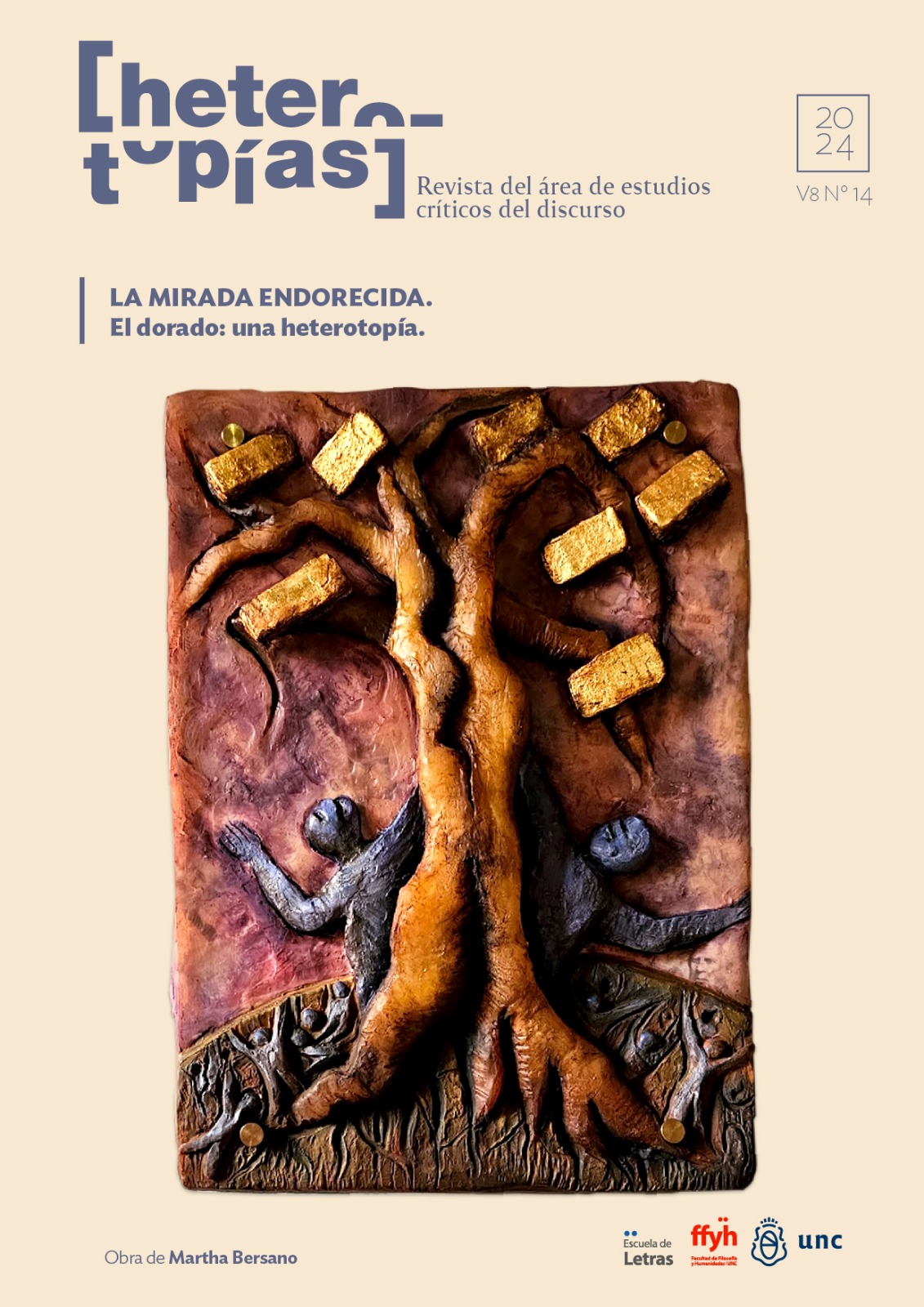The shape of trance: the Patagonian landscape as a mirage
Main Article Content
Abstract
In this paper we start from thinking of the Patagonian territory as a space shaped by colonial myths, some examples of which are the denominations of: ‘desert’, ‘promised land’, ‘earthly paradise’, or the ‘Argentinean and Chilean Swiss’. Within this framework, the video installation Historia de un desengaño (2003) by Francis Alÿs, condenses different problems around the imaginaries of the Patagonian territory. This looping film can be considered, from Groys' (2014) perspective, as a work of time based art, that is to say, an art that thematises lost time, unproductive time, repetition and, in this way, invites us to engage with time, to collaborate with it.
Downloads
Article Details

This work is licensed under a Creative Commons Attribution-NonCommercial-ShareAlike 4.0 International License.
Those authors who have publications with this journal, accept the following terms: Those authors who have publications with this journal, accept the following terms:
a. The authors will keep their copyright and guarantee to the journal the right of first publication of their work, which will be simultaneously subject to the Creative Commons Attribution - Non-Commercial - Share Alike (by-nc-sa) Attribution License; no commercial use of the original work or any derivative works is allowed, the distribution of which must be done with a license equal to the one that regulates the original work.
b. Authors may adopt other non-exclusive license agreements for the distribution of the published version of the work (e.g., deposit it in an institutional telematic archive or publish it in a monographic volume) provided that the initial publication in this journal is indicated.
c. Authors are allowed and recommended to disseminate their work through the Internet (e.g. in institutional telematic archives or on their website) before and during the submission process, which may lead to interesting exchanges and increase the number of citations of the published work. (See The effect of open access).
How to Cite
References
Aira, C., (2000). “Particularidades absolutas”, El Mercurio. Domingo 29 de Octubre de 2000. Chile.
Alÿs, F, (2006) A story of a deception/Historia de un desengaño.Patagonia 2003-2006, Catálogo Museo Malba. 1a ed. - Buenos Aires: Fundación Eduardo F. Costantini.
Andermann, J. (2018). Tierras en trance. Arte y naturaleza después del paisaje. Metales pesados, Santiago de Chile.
Andermann, J., (2013). Reverón: el paisaje evanescente. Tópicos del Seminario, (29),33-52. [fecha de Consulta 29 de Agosto de 2024]. ISSN: 1665-1200. Recuperado de: https://www.redalyc.org/articulo.oa?id=59427873003
Bandieri, S. (2005). Cruzando la cordillera… La frontera argentino-chilena como espacio social. Neuquén: CEHIR-Unco.
Berger, J. (2018) Modos de ver, Barcelona, Gustavo Gili.
Booth, R. (2011). “De la selva araucana a la Suiza chilena”, en CA Revista Ciudad y Arquitectura, 143, 2011, pp. 26-31. Colegio de Arquitectos de Chile.
Cortés-Rocca, P, (2011). El tiempo de la máquina: retratos, paisajes y otras imágenes de la nación, Colihue, Bs As.
Ferrer, C. (2004) Cabezas de tormenta: ensayo sobre lo ingobernable, editorial Terramar.
Foucault, M. (2010). Utopías y heterotopías. Disponible en: http://www.mxfractal.org/RevistaFractal48MichelFoucault.html
Foucault, M. (1968). Las palabras y las cosas. Una arqueología de las ciencias humanas. Siglo XXI Editores, S.A. de C.V. Buenos Aires, Argentina.
Gattás Vargas, M. (2021) Una constelación de imágenes monstruosas. Arte y paisaje en la región del Parque Nacional Nahuel Huapi. Tesis de Doctorado en Artes, Facultad de Bellas Artes, Universidad Nacional de La Plata. Buenos Aires. 2021. Capítulo 4. Disponible en: http://sedici.unlp.edu.ar/handle/10915/122097
Groys. B. “Camaradas del tiempo” en Volverse público. Caja negra editora, Buenos Aires, 2014.
Krebs, E. (1989). “Ningún lugar es un lugar” en Bariloche, mi pueblo, Vallmitjana, Ricardo, comp. Editado por Fundación Antorchas, Bs As.
Lois, C. (2018) Terrae incognitae: Modos de pensar y mapear geografías desconocidas. Buenos Aires, Eudeba.
Navarro Floria, P. (2006), Paisajes del progreso, Educo Editorial de la Universidad Nacional del Comahue, Neuquén Argentina.
Navarro Floria, P. (2008), “La “Suiza argentina”, de utopìa agraria a postal turística: la resignificación de un espacio entre los siglos XIX y XX” 3as Jornadas de Historia de la Patagonia San Carlos de Bariloche, 2008. Mesa: La Patagonia en el imaginario político y social.
